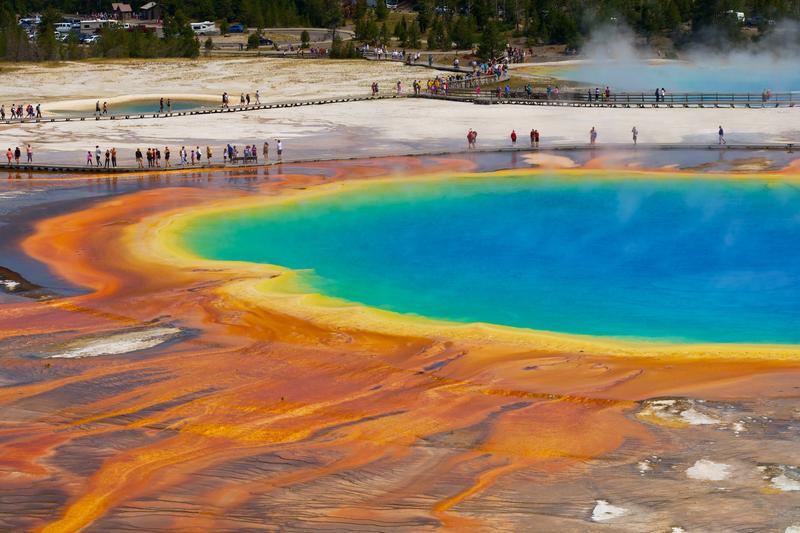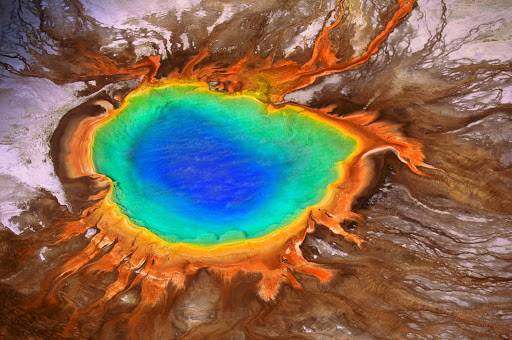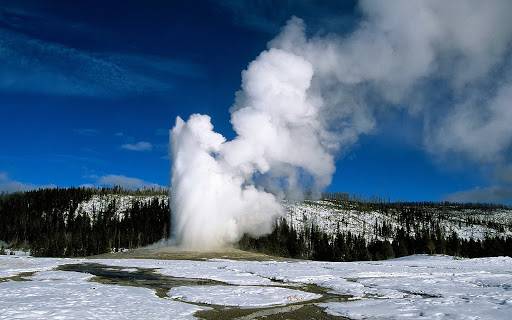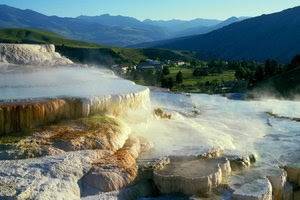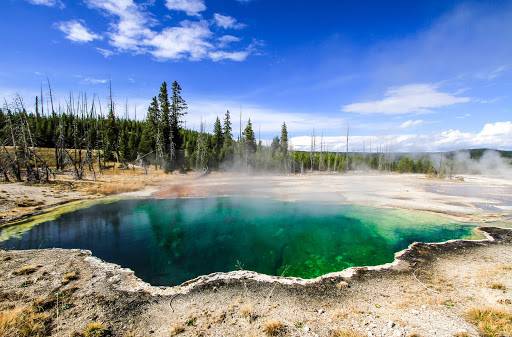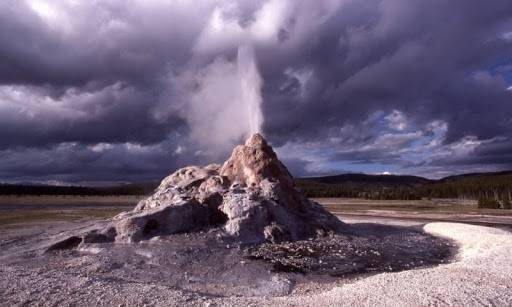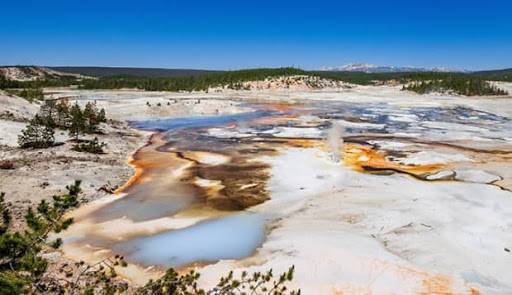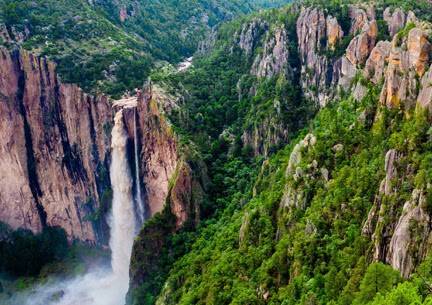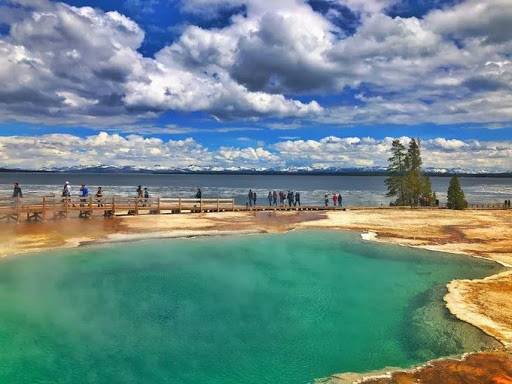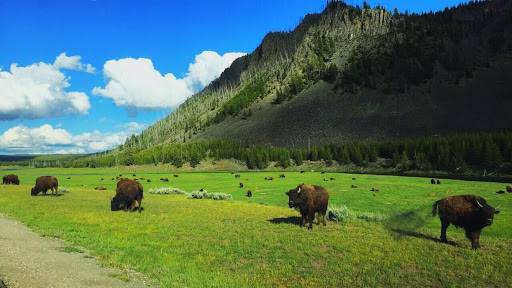The Grand Prismatic (also known as the Great Rainbow) is the largest hot spring in the United States and the third largest in the world. It has been named the 'most beautiful surface on Earth.' Discovered by geologists in 1871, it was named for its striking colors, ranging from green to bright red to orange. The mineral-rich spring water allows colored bacteria in the algae and microbial mats to thrive at the edges, creating these vibrant hues. The center of the spring is too hot for any life to survive. The colors transition from blue to green to yellow to orange to red from the inside out. A pedestrian boardwalk surrounds the Grand Prismatic, taking about 40 minutes to walk around. The best view of the Grand Prismatic is from above, but if conditions do not permit, visitors can also climb the low hill opposite to get a good view and take great photos.
Old Faithful Geyser
Old Faithful Geyser is named for its highly predictable eruptions. For over 100 years since its discovery, it has erupted every 33 to 93 minutes, each eruption lasting four to five minutes with water columns reaching over 40 meters high, without interruption. The Old Faithful Visitor Center posts an eruption schedule in advance. Visitors entering Yellowstone Park from the west or south gates can choose to first visit the Old Faithful Visitor Center to check the eruption times before exploring nearby attractions.
Mammoth Hot Springs Area
Located in the northwest of Yellowstone Park, it is the largest known carbonate deposit hot spring in the world. Its landscape is mainly composed of limestone terraces, also known as the Hot Terraces Area, which can be divided into the Upper Terraces and Lower Terraces. The original Mammoth Hot Springs had multiple hot springs flowing down the hillside in stages, fostering a large number of bacteria and creating a colorful staircase. However, after a crustal movement in 2002, most of the hot springs ceased activity, leading to the death of a large number of microorganisms. This caused the Mammoth Hot Springs to lose its color, and the dead bacteria turned into grayish-white powder, remaining on the dried-up large terraces.
West Thumb Geyser Basin is located on the western shore of Yellowstone Lake, in the southernmost part of Yellowstone National Park. This area features numerous hot springs, lakeside hot springs, and underwater hot springs, with the underwater hot springs being a unique highlight. The geyser vents bubble up from the lakebed, displaying a variety of colors: some are transparent green, some exhibit a gem-like blue, and others appear dark black. If your visit time is limited, you might consider prioritizing a visit to the Grand Prismatic Spring area.
The canyon area is located in the middle of Yellowstone National Park. The Grand Canyon of the Yellowstone is one of the park's most famous attractions, offering spectacular views of the deep canyon and cascading waterfalls. On clear days, a rainbow can be seen spanning the canyon. The Yellowstone Canyon is 32 kilometers long, about 450-1200 meters wide, and 360 meters deep. The long-term erosion by river water has created colorful rock walls in shades of yellow, orange, brown, and tan, which the Native Americans called 'Yellowstone.' There are several viewpoints on the opposite side of the Yellowstone River, including Lookout Point, Grand View, and Inspiration Point. The best viewpoint of the Grand Canyon of the Yellowstone is Lookout Point. Note that this road is one-way, and before driving out of this section, you will pass by Canyon Village.
The most distinctive feature of the Lower Geyser Basin is the mud pots, where the spring water is not clear but rather thick mud. Among the many mud pots, the most representative is the Fountain Paint Pot, a hot mud spring that continuously spews high-temperature colored mud.
Norris Geyser Basin is the hottest and most unstable series of geysers in Yellowstone National Park. The world's largest geyser, Steamboat Geyser, is also located in this area. It remains dormant for long periods and erupts infrequently (the last eruption was in 2008). It holds the record for the highest eruption at 380 feet. The geysers in this area are also quite colorful, ranging from crystal-clear blue-green to soft, milky blue-white. Due to its instability, new geysers form every year while old ones die out. Echinus Geyser is a famous geyser in Yellowstone, notable for being an acidic hot spring, whereas most of Yellowstone's hot springs are alkaline. Its pH value is 3, said to be as acidic as lemon juice. Other notable hot springs in this area include Pearl Geyser, Porcelain Basin, Ledge Geyser, and Colloidal Pool. Additionally, there are some beautiful orange or green channels formed by bacteria.
Yellowstone National Park has more than 40 waterfalls of various sizes. This waterfall is one of the most prominent in the park, originating from Tower Creek. The waterfall is at an elevation of 1,933 meters and has a total length of 40 meters. It is located 3 miles south of Roosevelt Junction, on the way to Tower-Canyon.
Yellowstone Lake
The southeastern part of Yellowstone National Park is the Yellowstone Lake area, known for its scenic lake and mountain views as well as abundant wildlife. Yellowstone Lake covers an area of approximately 354 square kilometers and is a typical crater lake, also known as 'the largest high-altitude lake in the United States.' The area around Yellowstone Lake is densely populated with spruce and fir trees, which are typical of the cold temperate evergreen forests. It is a habitat for many bird species and wildlife, and a favorite spot for fishing and boating enthusiasts. The lake is shaped like a hand, with a western part resembling a thumb called West Thumb, which is a famous geothermal area. Viewing Yellowstone Lake from West Thumb reveals a colorful and constantly changing lakeshore, indicating the presence of hot springs erupting from the lakebed. In winter, the lake surface freezes and is covered with snow, creating a spectacular scene in harmony with the distant snow-capped mountains.
Hayden Valley
The highlight of Hayden Valley is wildlife viewing. As you drive along, you'll see many spots where people gather, not with cannons but with telescopes. You can gaze at the distant mountains and floating clouds, and there's always a chance of encountering a herd of bison. You can observe various postures of wild animals.
